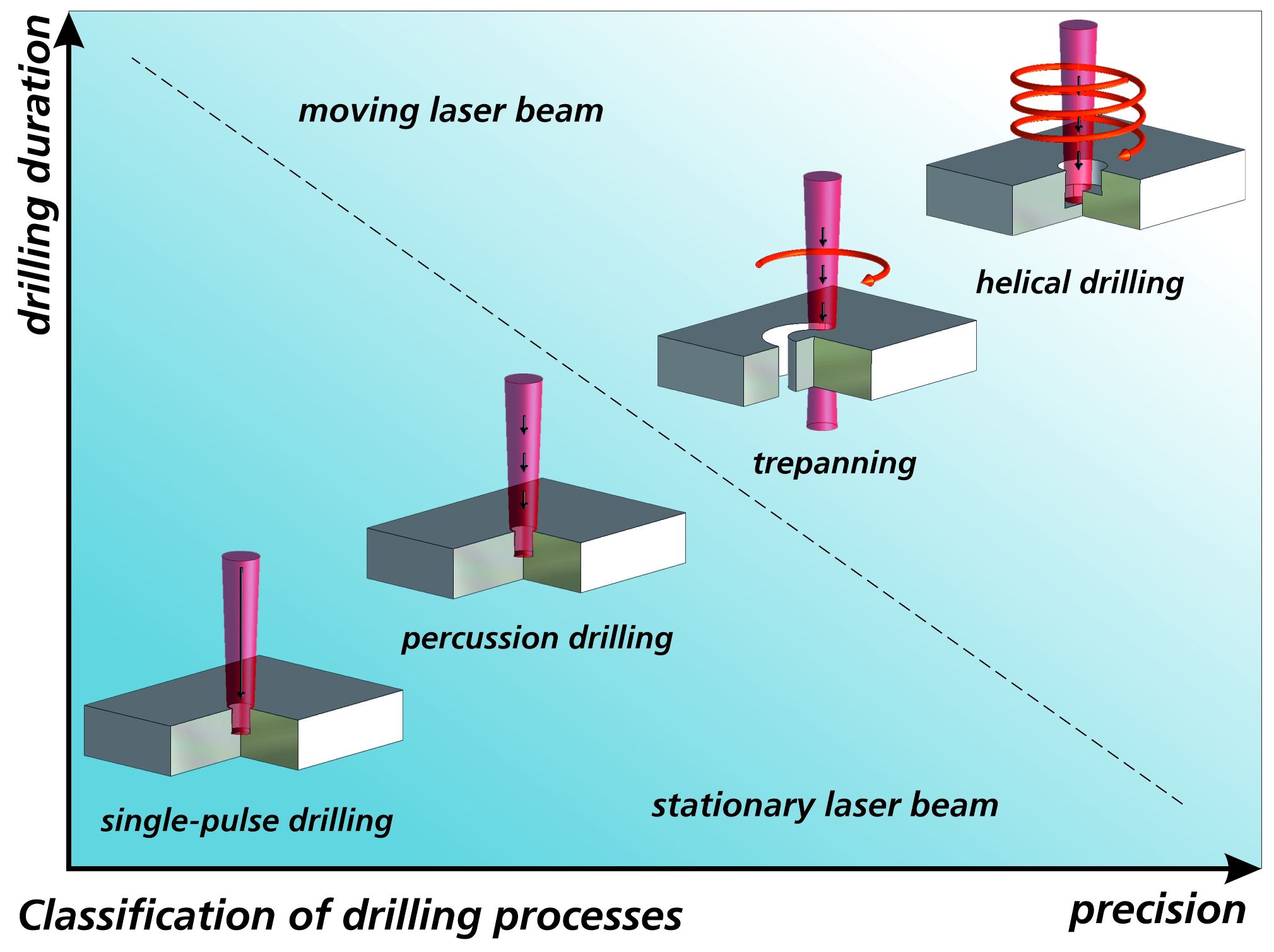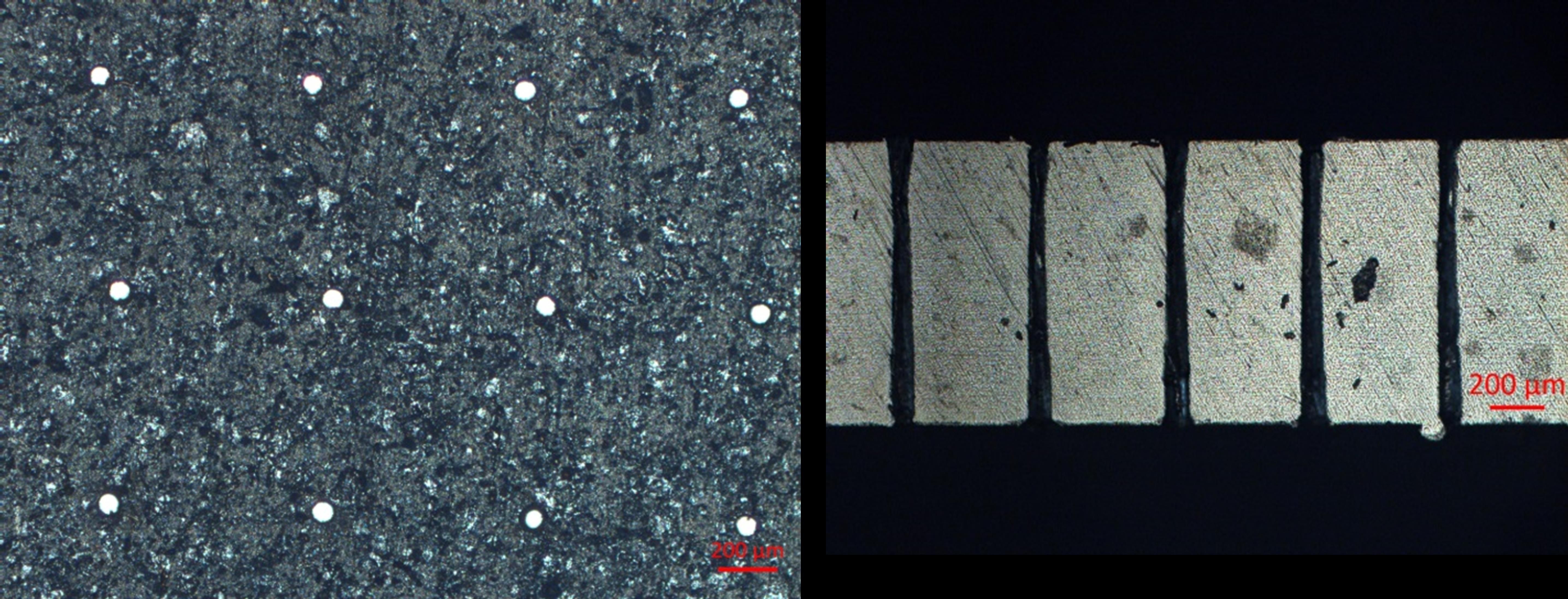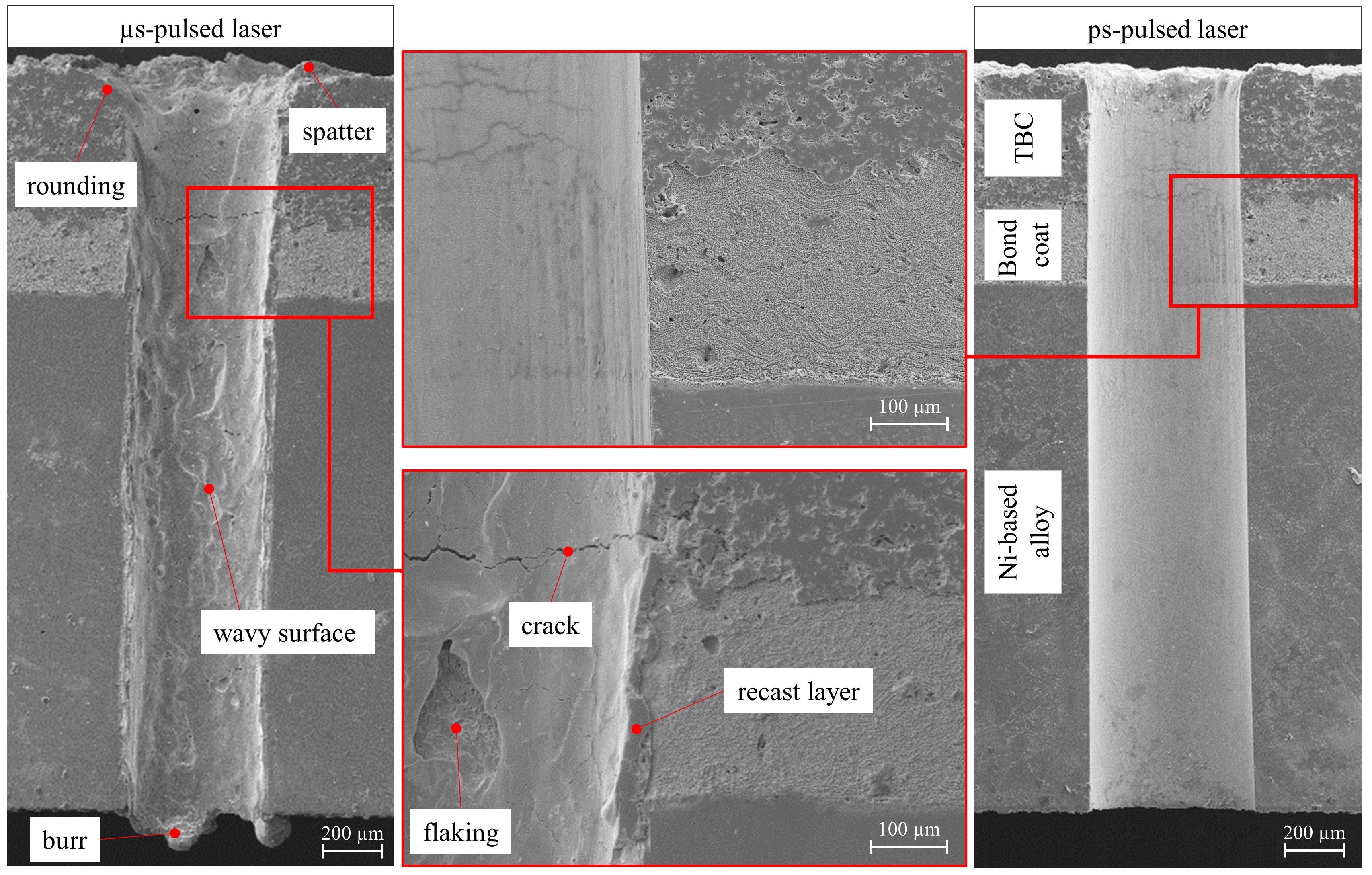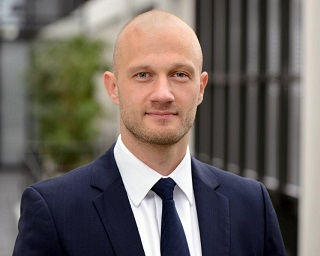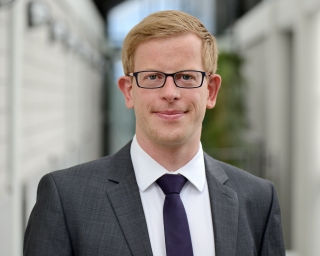How to drill with the laser?
The laser has now been in industrial use for several decades, and the applications are correspondingly diverse. In addition to marking, welding and cutting, lasers are also commonly used for drilling. From a scientific point of view, laser drilling is a non-milling thermal cutting process. Image 1 shows four different ways to drill holes with a laser. The trade-off between high speed and high precision plays a crucial role in the selection.
Of course, the fastest way is to “shoot” the holes through the material with single pulses. Helical drilling takes the longest, usually even requires special optical systems, but offers high precision in return. Percussion drilling involves placing multiple pulses at the same point to laser a hole through the material. Trepanning is when the hole is cut out by tracing the contour of the hole after a smaller hole has been initially drilled.
Of course, the precision of the drill hole and smoothness of its walls also depend on the material and the type of laser radiation. Since copper, for example, absorbs green and blue radiation much better than common infrared, it is better processed with this type of laser.
Pulse duration and pulse energy also influence the result, and this is where the ultrashort pulse (USP) lasers are something very special: They apply the laser energy in an extremely short time, converting the material into plasma almost instantaneously. As a result, USP lasers can process virtually any material, offer excellent surface quality, but also need the longest time to drill the hole.
Fraunhofer ILT has been investigating and optimizing all of these processes for years. This work has resulted in highly productive drilling processes that can produce tens to hundreds of holes per second. The great challenge here was to maintain low tolerances of the hole diameters and a high surface quality even at a high productivity (drilling rate). Here, the institute uses the well-known “on-the-fly” (OTF) single-pulse drilling process as well as an OTF percussion drilling process developed at Fraunhofer ILT.
Example 1: Single-pulse microdrilling with the laser
The most productive drilling process in the above list is drilling with single pulses. It should always be noted that the speed of the process and the hole quality must be balanced. If the optical assembly moves too fast over the surface, the hole will become elongated. The quality of the drill hole can be evaluated according to various parameters:
- Roundness, i.e. how far the drill hole deviates from an ideal circular shape. It is influenced by the laser and the processing speed.
- Conicity is the degree to which the diameter of the hole changes with depth.
- Surface quality in the drill hole, it is influenced by the intensity of the laser radiation.
At Fraunhofer ILT, the process was optimized so that 200 holes per second could be drilled in 1 mm thick titanium sheet. For this purpose, a single-mode laser was used, which can generate a focus diameter of only 12 µm, to produce holes with a diameter of just under 80 µm.
Drilling was performed “on-the-fly,” i.e. with a constant feed rate of the optical system relative to the workpiece. Using the optimized process parameters, the institute was able to machine a 2 meter long 3D-molded demonstrator of an aircraft wing on a 6-axis system. At a speed of 200 holes per second, about 2 million holes per square meter were drilled on an area of about 2 m² in less than three hours. The diameter of the holes was 80 µm. It was also important to precisely control the distance between the optical systems and the workpiece. Optical coherence tomography (OCT) was used to monitor this, as OCT is not affected by plasma or splashes and achieves a measuring accuracy of only a few micrometers.
 Fraunhofer Institute for Laser Technology ILT
Fraunhofer Institute for Laser Technology ILT